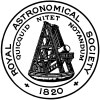Explosive transients in distant galaxies
Principal contact: P. T. O'Brien (pto@star.le.ac.uk )
Organisers: J. Granot (Hertfordshire, UK), P. T. O'Brien (Leicester, UK), S. Smartt (QUB, UK)
A number of new, sensitive space- and ground-based all-sky surveys are becoming available capable of detecting explosive extragalactic transients across a wide wavelength range from gamma-rays to radio. These are complemented by increasingly sensitive gravitational wave and neutrino observatories. The combination of such facilities opens up new opportunities for the study of transient phenomena including Gamma-Ray Bursts, Supernovae and tidal disruption by super-massive black holes. The new generation of optical all-sky surveys, such as Pan-STARRS, have great potential for uncovering further new physical phenomena. Extending the transient sky search to higher energies and into the radio raises exciting prospects for near-simultaneous observations using facilities such as Swift, Fermi, MAXI and LOFAR, particularly for high energy events associated with black holes and neutron stars. Physics in such extreme environments can be further explored by coordinating with the non-photonic gravitational wave experiments like LIGO and the range of neutrino detectors now working.
The session has two main goals: (1) discuss the observations and interpretation of the most interesting recent discoveries in the explosive Universe from working facilities; and (2) enhance discussion and interaction among the community and encourage new working relationships between existing and future transient science facilities.
Scientific Programme
| Monday 20th April | ||
| 11:00 | When Cores Collapse: a Variety of Stellar Deaths | Avishay Gal-Yam |
| 11:30 | Adaptive Optics Assisted Infrared Searches for Supernovae | Seppo Mattila |
| 11:42 | e-EVN and Global VLBI Observations of SN 2007gr | Zsolt Paragi |
| 11:54 | SN 2008S: an Electron Capture SN from a Super- AGB Progenitor? | Maria Botticella |
| 12:06 | The First Case of a Low Energy Stripped- Envelope Core-Collapse Supernova | Stefano Valenti |
| 12:18 | On the Possible Nature of the Unusual Optical and XRay Transient SCP06F6 | Boris Gaensicke |
| Monday 20th April | ||
| 14:00 | An Introduction to Gamma-Ray Bursts | Ralph Wijers |
| 14:30 | Recent Progress on Short GRBs | Andrew Levan |
| 14:42 | Beyond the Fireball Model : the Impact of Prolonged Central Engine Activity | Andrea Melandri |
| 14:54 | The Energetics of GRB 080721 and Constraints on its Progenitor | Rhaana Starling |
| 15:06 | The Spiral GRB Host Galaxies | Klaas Wiersema |
| 15:18 | Can Some X-Ray Plateaus Followed by a Steep Decay be Powered by a New-Born Magnetar as the GRB Central Engine? | Nicola Lyons |
| Monday 20th April | ||
| 16:30 | The Next Generation of Surveys and Transient Science | Rubina Kotak |
| 16:50 | The Naked-Eye Gamma-Ray Burst 080319B | Nial Tanvir |
| 17:02 | Particle Acceleration in the Jets of Swift GRBs | Peter Curran |
| 17:14 | Realistic Model for the Prompt and High Latitude Emission in GRBs | Franck Genet |
| 17:26 | A Statistical Study of UVOT GRB Afterglows | Samantha Oates |
| 17:38 | Swift-UVOT Captures the Earliest Ultraviolet Spectrum of a Gamma Ray Burst: GRB081203A | Paul Kuin |
| 17:50 | Near and Far: Luminosity Function Evidence for a Separate Population of Nearby, Under-Luminous Long GRBs | Bob Chapman |










